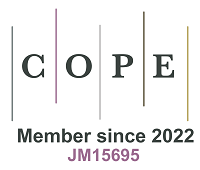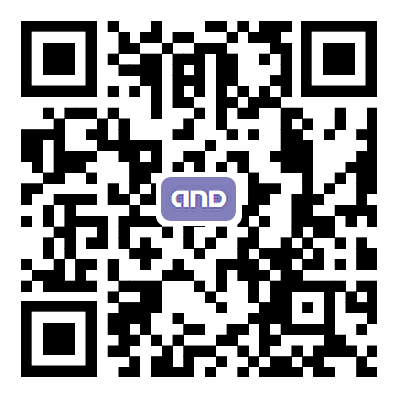REFERENCES
1. Deutsch F, Madle RA. Empathy: historic and current conceptualizations, measurement, and a cognitive theoretical perspective. Hum Dev. 1975;18:267-87.
2. Palumbo RV, Marraccini ME, Weyandt LL, et al. Interpersonal Autonomic Physiology: A Systematic Review of the Literature. Pers Soc Psychol Rev. 2017;21:99-141.
3. Gambin M, Sharp C. Relations between empathy and anxiety dimensions in inpatient adolescents. Anxiety Stress Coping. 2018;31:447-58.
4. Tibi-Elhanany Y, Shamay-Tsoory SG. Social cognition in social anxiety: first evidence for increased empathic abilities. Isr J Psychiatry Relat Sci. 2011;48:98-106.
5. Chanel G, Kivikangas JM, Ravaja N. Physiological compliance for social gaming analysis: Cooperative versus competitive play. Interac Comput. 2012;24:306-16.
6. Sharika KM, Thaikkandi S, Nivedita
7. Gordon I, Gilboa A, Cohen S, et al. Physiological and behavioral synchrony predict group cohesion and performance. Sci Rep. 2020;10:8484.
8. Goldstein P, Weissman-Fogel I, Shamay-Tsoory SG. The role of touch in regulating inter-partner physiological coupling during empathy for pain. Sci Rep. 2017;7:3252.
9. Cohen M, Abargil M, Ahissar M, Atzil S. Social and nonsocial synchrony are interrelated and romantically attractive. Commun Psychol. 2024;2:57.
10. Oliver LD, Vieira JB, Neufeld RWJ, Dziobek I, Mitchell DGV. Greater involvement of action simulation mechanisms in emotional vs cognitive empathy. Soc Cogn Affect Neurosci. 2018;13:367-80.
11. Jospe K, Genzer S, Klein Selle N, Ong D, Zaki J, Perry A. The contribution of linguistic and visual cues to physiological synchrony and empathic accuracy. Cortex. 2020;132:296-308.
12. Flory S, Guglielmini S, Scholkmann F, Marcar VL, Wolf M. How our hearts beat together: a study on physiological synchronization based on a self-paced joint motor task. Sci Rep. 2023;13:11987.
15. Pérez P, Madsen J, Banellis L, et al. Conscious processing of narrative stimuli synchronizes heart rate between individuals. Cell Rep. 2021;36:109692.
16. Madsen J, Parra LC. Cognitive processing of a common stimulus synchronizes brains, hearts, and eyes. PNAS Nexus. 2022;1:pgac020.
17. Golland Y, Arzouan Y, Levit-Binnun N. The mere co-presence: synchronization of autonomic signals and emotional responses across co-present individuals not engaged in direct interaction. PLoS One. 2015;10:e0125804.
18. Golland Y, Keissar K, Levit-Binnun N. Studying the dynamics of autonomic activity during emotional experience. Psychophysiology. 2014;51:1101-11.
19. Callara AL, Scopa C, Contalbrigo L, et al. Unveiling directional physiological coupling in human-horse interactions. iScience. 2024;27:110857.
20. Rizzolatti G, Fadiga L, Gallese V, Fogassi L. Premotor cortex and the recognition of motor actions. Brain Res Cogn Brain Res. 1996;3:131-41.
21. Palser ER, Glass J, Fotopoulou A, Kilner JM. Relationship between cardiac cycle and the timing of actions during action execution and observation. Cognition. 2021;217:104907.
22. Yoon H, Choi SH, Kim SK, et al. Human heart rhythms synchronize while Co-sleeping. Front Physiol. 2019;10:190.
23. Drews HJ, Wallot S, Brysch P, et al. Bed-sharing in couples is associated with increased and stabilized rem sleep and sleep-stage synchronization. Front Psychiatry. 2020;11:583.
24. Van Leeuwen P, Geue D, Thiel M, et al. Influence of paced maternal breathing on fetal-maternal heart rate coordination. Proc Natl Acad Sci U S A. 2009;106:13661-6.
25. Rubart M, Pasumarthi KB, Nakajima H, Soonpaa MH, Nakajima HO, Field LJ. Physiological coupling of donor and host cardiomyocytes after cellular transplantation. Circ Res. 2003;92:1217-24.
26. der Tweel LH, Meijler FL, van Capelle FJ. Synchronization of the heart. J Appl Physiol. 1973;34:283-7.
27. Anishchenko VS, Balanov AG, Janson NB, Igosheva NB, Bordyugov GV. Entrainment between heart rate and weak noninvasive forcing. Int J Bifurcation Chaos. 2000;10:2339-48.
28. Choi SH, Yoon H, Jin HW, et al. Effect of closed-loop vibration stimulation on heart rhythm during naps. Sensors (Basel). 2019;19:4136.
29. Son HW, Kim SH, Lee TM, et al. Closed-loop vibration stimulation based on heart rhythm for reducing sleep inertia. J Sleep Res. 2025;:e14458.
30. Tanaka Y, Terasawa Y, Umeda S. Effects of interoceptive accuracy in autonomic responses to external stimuli based on cardiac rhythm. PLoS One. 2021;16:e0256914.
31. Alabdulgader A, McCraty R, Atkinson M, et al. Long-term study of heart rate variability responses to changes in the solar and geomagnetic environment. Sci Rep. 2018;8:2663.
32. Ramishvili A, Janashia K, Tvildiani L. High heart rate variability causes better adaptation to the impact of geomagnetic storms. Atmosphere. 2023;14:1707.
33. McCraty R, Atkinson M, Stolc V, Alabdulgader AA, Vainoras A, Ragulskis M. Synchronization of human autonomic nervous system rhythms with geomagnetic activity in human subjects. Int J Environ Res Public Health. 2017;14:770.
34. Bastos MAV Jr, Braz DF, Porto ALM, Cordeiro KSDS, Portella RB, Granger DA. Physiological attunement and flourishing: understanding the influence of relationships on health. Front Psychiatry. 2025;16:1614379.
35. Wolters NE, Mobach L, Wuthrich VM, et al. Emotional and social loneliness and their unique links with social isolation, depression and anxiety. J Affect Disord. 2023;329:207-17.
36. Helm JL, Sbarra D, Ferrer E. Assessing cross-partner associations in physiological responses via coupled oscillator models. Emotion. 2012;12:748-62.
37. Pietromonaco PR, DeBuse CJ, Powers SI. Does attachment get under the skin? Curr Dir Psychol Sci. 2013;22:63-8.
38. Danyluck C, Page-gould E. Intergroup dissimilarity predicts physiological synchrony and affiliation in intergroup interaction. J Exp Soc Psychol. 2018;74:111-20.
39. Asher M, Barthel AL, Hofmann SG, Okon-Singer H, Aderka IM. When two hearts beat as one: heart-rate synchrony in social anxiety disorder. Behav Res Ther. 2021;141:103859.
40. Konrad K, Gerloff C, Kohl SH, et al. Interpersonal neural synchrony and mental disorders: unlocking potential pathways for clinical interventions. Front Neurosci. 2024;18:1286130.
41. Asher M, Asnaani A, Aderka IM. Gender differences in social anxiety disorder: a review. Clin Psychol Rev. 2017;56:1-12.
42. Hull L, Levy L, Lai MC, et al. Is social camouflaging associated with anxiety and depression in autistic adults? Mol Autism. 2021;12:13.
43. Gernert CC, Nelson A, Falkai P, Falter-Wagner CM. Synchrony in psychotherapy: High physiological positive concordance predicts symptom reduction and negative concordance predicts symptom aggravation. Int J Methods Psychiatr Res. 2023;33:e1978.
44. Tschacher W, Ribeiro E, Gonçalves A, Sampaio A, Moreira P, Coutinho J. Electrodermal synchrony of patient and therapist as a predictor of alliance and outcome in psychotherapy. Front Psychol. 2025;16:1545719.
45. Mah L, Szabuniewicz C, Fiocco AJ. Can anxiety damage the brain? Curr Opin Psychiatry. 2016;29:56-63.
46. Santabárbara J, Lipnicki DM, Villagrasa B, Lobo E, Lopez-Anton R. Anxiety and risk of dementia: Systematic review and meta-analysis of prospective cohort studies. Maturitas. 2019;119:14-20.
47. Vernon EK, Cooley B, Rozum W, et al. Caregiver-care recipient relationship closeness is associated with neuropsychiatric symptoms in dementia. Am J Geriatr Psychiatry. 2019;27:349-59.
48. Fu D, Incio-Serra N, Motta-Ochoa R, Blain-Moraes S. Interpersonal physiological synchrony for detecting moments of connection in persons with dementia: a pilot study. Front Psychol. 2021;12:749710.
49. Demichelis OP, Coundouris SP, Grainger SA, Henry JD. Empathy and theory of mind in Alzheimer’s Disease: a meta-analysis. J Int Neuropsychol Soc. 2020;26:963-77.
50. Goessl VC, Curtiss JE, Hofmann SG. The effect of heart rate variability biofeedback training on stress and anxiety: a meta-analysis. Psychol Med. 2017;47:2578-86.
51. Zucker TL, Samuelson KW, Muench F, Greenberg MA, Gevirtz RN. The effects of respiratory sinus arrhythmia biofeedback on heart rate variability and posttraumatic stress disorder symptoms: a pilot study. Appl Psychophysiol Biofeedback. 2009;34:135-43.
53. Feldman R. Parent-infant synchrony: a biobehavioral model of mutual influences in the formation of affiliative bonds. Monographs Society Res Child. 2012;77:42-51.
54. Dumas G, Nadel J, Soussignan R, Martinerie J, Garnero L. Inter-brain synchronization during social interaction. PLoS One. 2010;5:e12166.
55. Czeszumski A, Eustergerling S, Lang A, et al. Hyperscanning: a valid method to study neural inter-brain underpinnings of social interaction. Front Hum Neurosci. 2020;14:39.
56. Bastos Jr. MAV, Braz DF, Porto ALM, Cordeiro KSdS, Portella RB, Granger DA. Physiological attunement and flourishing: understanding the influence of relationships on health. Front Psychiatry. 2025;16:1614379.
57. Hatfield E, Cacioppo JT, Rapson RL. Emotional contagion. Cambridge: Cambridge University Press; 1993.
58. Marci CD, Orr SP. The effect of emotional distance on psychophysiologic concordance and perceived empathy between patient and interviewer. Appl Psychophysiol Biofeedback. 2006;31:115-28.
59. Slovák P, Tennent P, Fitzpatrick G. Exploring skin conductance synchronisation in everyday interactions. In NordiCHI '14: Proceedings of the 8th Nordic Conference on Human-Computer Interaction: Fun, Fast, Foundational; 2014 Oct 26-30; Helsinki, Finland. New York: Association for Computing Machinery; 2014. p. 511-20.
61. Lee U, Oh G, Kim S, Noh G, Choi B, Mashour GA. Brain networks maintain a scale-free organization across consciousness, anesthesia, and recovery: evidence for adaptive reconfiguration. Anesthesiology. 2010;113:1081-91.
62. Faes L, Nollo G, Jurysta F, Marinazzo D. Information dynamics of brain-heart physiological networks during sleep. New J Phys. 2014;16:105005.
63. Takamizawa K, Kawasaki M. Transfer entropy for synchronized behavior estimation of interpersonal relationships in human communication: identifying leaders or followers. Sci Rep. 2019;9:10960.
64. Thorson KR, West TV, Mendes WB. Measuring physiological influence in dyads: A guide to designing, implementing, and analyzing dyadic physiological studies. Psychol Methods. 2018;23:595-616.
65. Slovák P, Tennent P, Fitzpatrick G. Physiological indicators of the relation between autistic traits and empathy: evidence from electrocardiogram and skin conductance signals. In ICBME 2022: Proceeding of 2022 29th National and 7th International Iranian Conference on Biomedical Engineering (ICBME); 2022 Dec 21-22; Tehran, Iran. Piscataway: IEEE Publishers; 2022. p. 177-83.







